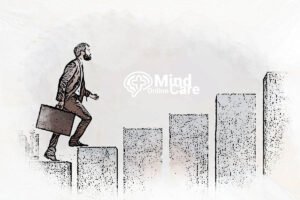Are you constantly tossing and turning, struggling to get a good night’s sleep? You’re not alone. Sleep disorders are more common than you might think, affecting millions of Americans and significantly impacting their quality of life. From insomnia and sleep apnea to narcolepsy and restless leg syndrome, these conditions can lead to a host of physical and mental health issues if left unchecked. But the good news is, there are effective ways to manage and overcome these sleep challenges. In this comprehensive guide, we’ll explore the different types of sleep disorders, their symptoms, and the latest approaches to diagnosis and treatment.
Key Takeaways
- Sleep disorders can have a significant impact on physical and mental health, leading to complications like heart disease, stroke, and diabetes.
- Factors such as age, genetics, medical conditions, and lifestyle choices can increase the risk of developing sleep disorders.
- Common types of sleep disorders include insomnia, sleep apnea, narcolepsy, and restless leg syndrome.
- Proper diagnosis and effective treatment are crucial for managing sleep disorders and improving overall well-being.
- Making lifestyle changes, such as establishing healthy sleep habits and managing stress, can also play a key role in managing sleep disorders.
Overview of Sleep Disorders
Sleep disorders are a broad category of conditions that affect the way people sleep. These disorders can have a significant impact on an individual’s overall health and well-being, and understanding the different types and their symptoms is crucial for effective management.
Common Types of Sleep Disorders
The most common types of sleep disorders include:
- Insomnia, characterized by difficulty falling or staying asleep
- Sleep apnea, which involves disruptions in breathing during sleep
- Narcolepsy, a condition that causes excessive daytime sleepiness
- Restless leg syndrome, which creates an irresistible urge to move the legs
- Sleep paralysis, circadian rhythm disorders, hypersomnia, night terrors, and sleepwalking
Symptoms and Impact of Sleep Disorders
The symptoms of sleep disorders can vary widely but often include excessive daytime sleepiness, difficulty falling or staying asleep, breathing disruptions, and unusual movements or behaviors during sleep. These symptoms can have a significant impact on an individual’s overall health and well-being. Sleep disorders have been linked to an increased risk of other medical conditions, such as heart disease, stroke, and diabetes, as well as mental health issues like depression and anxiety. Untreated sleep disorders can also impair cognitive function, reduce workplace productivity, and increase the risk of accidents.
sleep disorders
Sleep disorders can have a significant impact on our overall health and well-being. Two of the most common sleep disorders are insomnia and sleep apnea, each with its own unique set of causes, symptoms, and consequences.
Insomnia and Its Effects
Insomnia is a prevalent sleep disorder characterized by difficulty falling asleep, staying asleep, or obtaining quality sleep. This condition can be short-term or chronic, with a range of potential causes, including stress, anxiety, medical conditions, and certain medications. Individuals struggling with insomnia may experience daytime fatigue, difficulty concentrating, and irritability. Untreated insomnia can lead to serious consequences, such as an increased risk of accidents, health problems, and mental health issues.
Sleep Apnea: Causes and Consequences
Sleep apnea is another prevalent sleep disorder, characterized by disruptions in breathing during sleep. There are two main types of sleep apnea: obstructive sleep apnea, which is caused by a physical blockage in the airway, and central sleep apnea, which is caused by the brain’s failure to signal the muscles to breathe. Symptoms of sleep apnea include loud snoring, gasping or choking during sleep, and daytime fatigue. Sleep apnea has been linked to a range of health problems, including high blood pressure, heart disease, and stroke, as well as an increased risk of accidents and workplace errors.
It is estimated that 50 to 70 million Americans suffer from sleep disorders, impacting their daily functioning and overall health. Sleep deprivation and disorders are also associated with an increased risk of hypertension, diabetes, obesity, depression, heart attack, and stroke. Addressing these sleep-related challenges is crucial for maintaining optimal physical and mental well-being.
| Disorder | Causes | Symptoms | Health Risks |
|---|---|---|---|
| Insomnia |
|
|
|
| Sleep Apnea |
|
|
|
Addressing the challenges posed by sleep disorders, such as improving public awareness, education, and professional training, as well as ensuring access to adequate diagnosis and treatment, is crucial for maintaining optimal health and well-being.
Diagnosis and Treatment Approaches
When it comes to addressing [sleep disorders], the first step is often identifying the underlying cause through comprehensive evaluation and testing. This typically involves a combination of medical history, physical examination, and specialized sleep studies such as [polysomnography] or [home sleep apnea testing]. These diagnostic tools can provide valuable insights into the specific type and severity of the sleep disorder, guiding the most appropriate treatment approach.
Once the sleep disorder has been diagnosed, a tailored treatment plan can be developed. This may encompass a range of interventions, including lifestyle changes, [cognitive-behavioral therapy], and medical treatments. For instance, [continuous positive airway pressure (CPAP)] therapy has become the standard approach for managing [obstructive sleep apnea], as it helps maintain airflow and prevent airway blockages during sleep. Similarly, [oral appliances] can be effective in repositioning the jaw and tongue to improve breathing.
In some cases, [surgical options] may be considered for certain sleep disorders, such as [upper airway nerve stimulation therapy] or [soft tissue reduction] procedures for obstructive sleep apnea. These more invasive interventions are typically explored when other, less-invasive treatments have proven ineffective.
Ultimately, the goal of diagnosis and treatment is to address the underlying causes of sleep disorders, alleviate symptoms, and improve overall sleep quality and daytime functioning. By working closely with healthcare professionals, individuals can find the most suitable solution to manage their [sleep disorders] and achieve better rest.
| Diagnostic Technique | Description |
|---|---|
| [Actigraphy] | Measures arm and leg movement during sleep to provide information about sleep-wake cycles over time. |
| [Polysomnography] | Records brain waves, oxygen levels, heart rate, and breathing during sleep to identify potential issues. |
| [Multiple Sleep Latency Test (MSLT)] | Measures daytime sleepiness by tracking how long it takes to fall asleep during designated nap periods. |
| [Maintenance of Wakefulness Test (MWT)] | Assesses daytime alertness by evaluating the ability to stay awake during specified time frames. |
| [Home Sleep Apnea Test] | Monitors breathing rate, airflow, oxygen levels, and cardiac function to diagnose sleep apnea. |
| [Overnight Oximetry Test] | Measures heart rate and oxygen levels in the blood during sleep to detect potential drops caused by sleep apnea. |
The selection and combination of diagnostic tests often depend on the individual’s specific symptoms, medical history, and the healthcare provider’s clinical judgment. By accurately identifying the sleep disorder, healthcare professionals can develop a targeted treatment plan to address the underlying issues and improve the patient’s overall sleep quality and daytime functioning.
Managing Sleep Disorders Through Lifestyle Changes
Addressing sleep disorders often requires a multifaceted approach, where lifestyle modifications play a crucial role alongside medical treatment. By establishing healthy sleep habits and incorporating stress management techniques, individuals can take proactive steps to improve their sleep quality and overall well-being.
Healthy Sleep Habits and Routines
Maintaining a consistent sleep schedule, even on weekends, can help regulate the body’s natural circadian rhythms. Creating a relaxing bedtime routine, such as taking a warm bath, reading a book, or practicing gentle meditation, can signal to the brain that it’s time to wind down. Limiting exposure to blue light-emitting devices like smartphones, tablets, and televisions in the hours before bed can also improve sleep quality.
Ensuring a comfortable sleep environment, with a supportive mattress and pillows, as well as a cool, dark, and quiet room, can further facilitate better sleep. Regular exercise during the day can also contribute to improved sleep, but it’s important to avoid intense workouts close to bedtime.
Stress Management and Relaxation Techniques
Stress and anxiety can be significant contributors to sleep disorders, so incorporating stress management and relaxation techniques into your daily routine can be highly beneficial. Practices such as meditation, yoga, deep breathing exercises, and progressive muscle relaxation can help calm the mind and body, making it easier to fall and stay asleep.
“Cognitive behavioral therapy for insomnia is usually recommended as the first treatment and is as effective or more effective than sleep medicines.”
In addition, adopting healthy coping mechanisms for managing stress, such as journaling, engaging in hobbies, or seeking social support, can also contribute to improved sleep quality. By addressing the underlying causes of sleep disorders, individuals can take steps to regain control over their sleep and enjoy the benefits of better rest.

| Lifestyle Changes | Impact on Sleep |
|---|---|
| Maintaining a consistent sleep schedule | Regulates the body’s circadian rhythms, improving sleep quality |
| Limiting blue light exposure before bed | Enhances melatonin production, promoting better sleep |
| Engaging in regular exercise | Reduces stress and fatigue, facilitating better sleep |
| Practicing stress management techniques | Calms the mind and body, making it easier to fall and stay asleep |
Conclusion
Sleep disorders can have a profound impact on our overall health and well-being, but with the right understanding and management strategies, we can improve our sleep quality and minimize the negative effects. By recognizing the common types of sleep disorders, their symptoms, and the various treatment and lifestyle approaches available, we can take proactive steps to address our sleep issues and achieve better, more restful sleep.
Adopting healthy sleep habits, managing stress, and seeking medical treatment when necessary can all contribute to improving our sleep and overall health. It is crucial to understand that sleep disorders are prevalent, affecting millions of Americans, and their consequences can be far-reaching, from increased risk of chronic conditions to impaired cognitive performance and emotional well-being.
By staying informed, implementing effective strategies, and advocating for continued research and support in the field of sleep disorders, we can work towards a future where everyone can enjoy the benefits of quality sleep and improved overall health and well-being.






